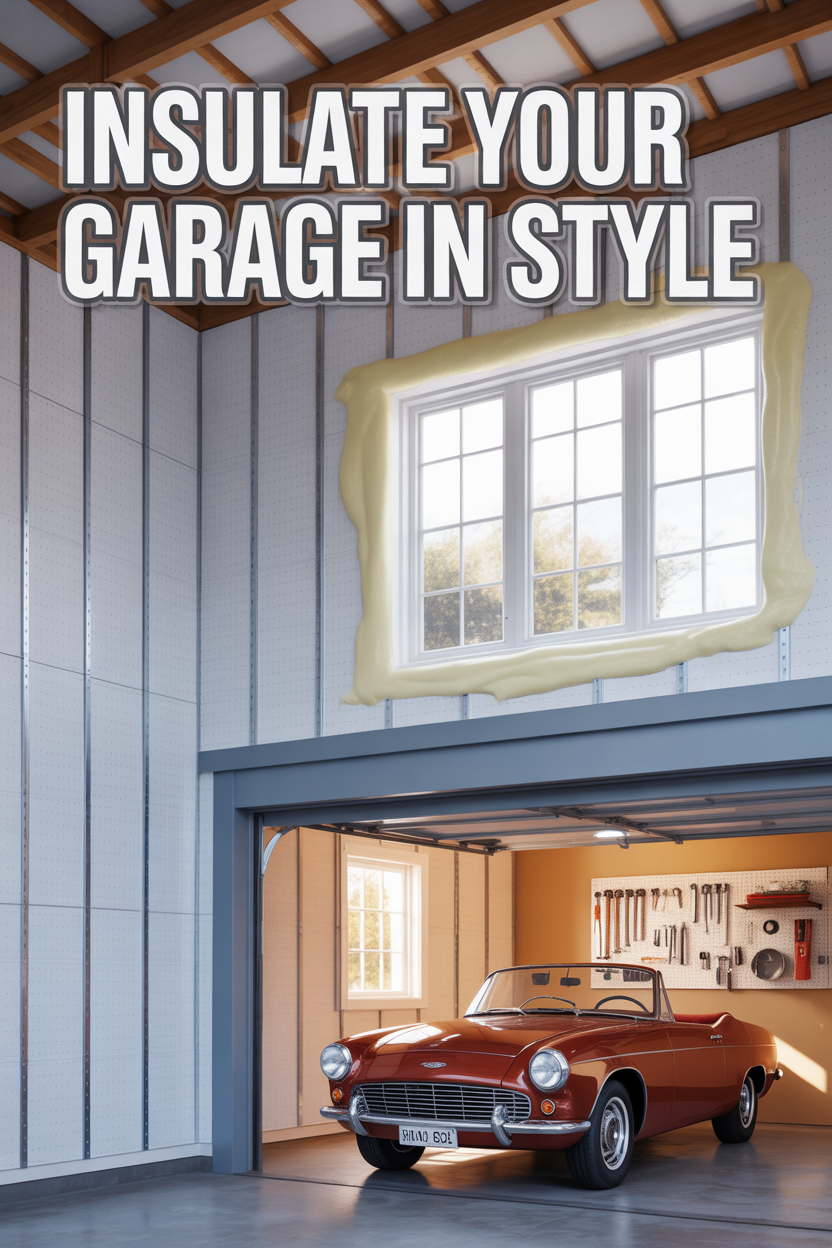
When I started my garage insulation project, I was surprised at how many choices I needed to make.
Batt insulation is best between wall studs and ceiling joists. Spray foam works best in attics rather than garages, so will be a good choice if you have a storage loft. Use rigid foam on the garage doors.
Batt is the only choice that doesn’t require you to rent equipment to apply the insulation. You might also want to read our article: Is Batt or Rigid Foam a Better Choice for Garage Insulation? (opens in a new window)
Takeaway
Spray foam and blown-in insulation require special equipment that you rent, or just hire out the job. Fiberglass batt insulation is much easier to do by yourself. Foam board insulation is easy to install, but does not offer that much temperature protection. Spray and blown are more expensive than batt fiberglass. Blown-in is priced between batt and spray and offers good results.
Articles you might like (links open in new browser windows):
- The Complete Guide to Choosing a Garage Heater
- Is Batt or Rigid Foam a Better Choice for Garage Insulation?
- The Best Garage Thermal Leak Detector
Insulating Your Garage
One of the most effective ways to make your garage more energy efficient is to insulate it. This will keep the heat in during the winter and keep it out during the summer. There are several different types of insulation to choose from, including fiberglass, spray foam, and rigid foam. You’ll want to choose the type that works best for your particular garage, taking into consideration the size and construction of the space.
Fiberglass Batt Garage Insulation

Fiberglass batt insulation is common to most construction, including in garages, homes, and commercial buildings.
Fiberglass insulation provides several key benefits, including:
- Energy efficiency: Fiberglass insulation is a highly effective insulator, helping to reduce energy waste and lower energy bills.
- Durability: Fiberglass insulation is strong and durable, able to withstand normal wear and tear, and maintains its insulation properties for many years.
- Safety: Fiberglass insulation is non-toxic and does not pose a hazard to human health. It is also fire-resistant, helping to provide a measure of fire protection to your home or building.
- Cost-effectiveness: Fiberglass insulation is widely available and is generally less expensive than other types of insulation, making it an affordable option relative to other options.
Fiberglass downsides include:
- Irritation: Fiberglass insulation can be irritating to the skin and eyes, and it is recommended that protective clothing and masks be worn during installation to minimize exposure.
- Allergen concerns: Some people are sensitive to fiberglass and may experience allergic reactions, such as itching and redness when exposed to the material.
- Poor air tightness: Fiberglass insulation is not as airtight as some other types of insulation, which can allow air to leak through and reduce its overall effectiveness.
Batt insulation is the most common form and is available in pre-cut sheets that can be easily installed between wall studs and other spaces. Fiberglass batts look like blocks of cotton candy. But don’t eat or even touch a batt without gloves. The batts are made of glass fibers that hurt and cause tremendous itching when you touch them. A batt has a resin coating to hold the block together, but this does not prevent the glass from poking through.
Fiberglass batts are flexible, durable, and efficient, as compared to other insulation types. With the caveat that you must wear protective equipment and be comfortable with a sharp blade, it’s easy to install between the wall studs. It’s not as easy to install in the ceiling joists because that job is awkward.

Blown-in Insulation
Blown-in insulation is a loose-fill form that can be blown into walls and other spaces. Blown-in fiberglass insulation is a type of insulation made of fine glass fibers that are blown into attics or wall cavities to provide thermal resistance. Homeowners usually hire professionals to install blown-in insulation. You need an “insulation blower” to do the work.
One advantage of blown-in fiberglass insulation is that it can be installed in hard-to-reach areas, such as attics with tight spaces, and can effectively fill small gaps and crevices that can be missed with other types of insulation.
When installing blown-in fiberglass insulation, it is important to wear protective gear, such as gloves, masks, and goggles, to avoid inhaling the fibers. Additionally, it is essential to follow all manufacturer instructions and building codes when installing insulation, to ensure proper performance and safety.
The advantages of blown-in insulation include:
- Initial Cost: Blown-in insulation is less expensive than spray foam insulation
- Easy Installation: Blown-in is easier to install than spray foam
- Target Areas: Blown-in can be used to fill irregularly shaped spaces and hard-to-reach areas
- Curing Time: Blown-in has no curing time before it protects the garage
The disadvantages of blown-in insulation include:
- Initial Cost: Blown-in is more expensive than batt insulation
- Professional Installation Required: Blown-in insulation requires specialized equipment and trained professionals to install, making it more difficult to install as a DIY project.
- Possible Health Concerns: Blown-in insulation can contain irritants such as fiberglass, which can cause respiratory problems if inhaled.
- Possible Moisture Retention: If not installed properly, blown-in insulation can trap moisture, leading to mold and other moisture-related problems.
We are talking about the walls and ceilings in this article, but insulating the door makes a huge difference to temperature too. You might also like our article: Should You Insulate the Garage Door? Read This Before You Do (opens in a new window)

Spray Foam Garage Insulation
Spray foam insulation is a liquid spray that expands into a solid foam. The foam is typically made of two liquid components, an isocyanate and a polyol resin, that are mixed together and then sprayed through a specialized applicator. The liquid components react and expand to form a solid, continuous insulation layer.
One advantage of spray foam insulation is its ability to provide a comprehensive air seal, which can help prevent air infiltration and reduce energy waste. The foam can fill small gaps and crevices that are difficult to reach with traditional insulation materials, such as fiberglass batt insulation, making it ideal for garages with irregular shapes or tight spaces.
Additionally, spray foam has a higher R-value per inch compared to fiberglass, meaning it provides better insulation performance and can improve energy efficiency in a garage.
Another advantage of spray foam insulation is its durability. Unlike fiberglass batt insulation, which can settle and lose its insulating properties over time, spray foam maintains its shape and insulation properties for the life of the building. Additionally, spray foam does not absorb moisture, which can lead to mold and mildew growth, making it a good choice for garages, which are often subject to high humidity levels.
However, spray foam insulation also has some drawbacks. One is the cost, which is typically higher compared to fiberglass batt insulation. The equipment and materials needed to install spray foam insulation can also be more expensive, and the installation process requires special skills and training, making it less suitable for DIY projects. Furthermore, the installation process can be messy and requires adequate ventilation to avoid off-gassing fumes, which can be hazardous if not handled properly.
Pros of Spray Foam Insulation:
- Better Protection: Spray foam provides the best air seal. That reduces air infiltration and improves energy efficiency
- Target Areas: Spray foam can fill difficult-to-reach areas, including irregular shapes and corners
- Effectiveness: Spray foam has a higher R-value per inch compared to fiberglass batt insulation, meaning it provides better insulation performance
- Longevity: Spray foam does not settle or lose its insulation properties over time like some batt insulation can
Cons of Spray Foam Insulation:
- Expense: Spray foam is more expensive than blown-in and batt insulation
- Equipment: Spray foam requires special equipment and skills to install, making it less DIY-friendly
- Installation: Spray foam is harder to install than blown-in and batt
- Messy: Spray foam can be messy
- Ventilation: Spray foam requires consistent ventilation to remove off-gassing fumes
Rigid Foam Garage Insulation

Rigid foam insulation is made from rigid polystyrene, polyisocyanurate, or polyurethane foam. It is commonly used in garages as it is an efficient and effective way to insulate the space.
The best place to use rigid foam is on garage ceilings, walls, and areas with high moisture.
Rigid foam insulation advantages include:
- Effective: Rigid foam has a high R-value, meaning it has a high level of thermal resistance, which helps to keep the garage warm in the winter and cool in the summer.
- Moisture Resistant: Rigid foam insulation is moisture-resistant, making it ideal for garages that are prone to moisture buildup.
- Durable: The rigid structure of foam insulation makes it durable and resistant to damage from impacts or other types of wear and tear.
- Easy to Install: Rigid foam insulation is easy to install and can be cut to fit the specific dimensions of the garage.
- Improved Air Quality: By sealing the garage and reducing the amount of air transfer between the garage and the rest of the house, rigid foam insulation can help to improve indoor air quality.
Rigid foam insulation disadvantages include the:
- Cost: Rigid foam insulation is more expensive than fiberglass batt and blown-in insulation.
- Potential Health Concerns: Rigid foam insulation may contain irritants such as formaldehyde, which can be harmful if inhaled.
- Environmental Concerns: Some types of rigid foam insulation are made from petroleum-based products and are not biodegradable, which can have negative environmental impacts.









